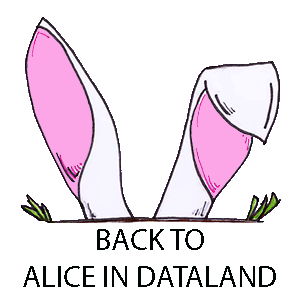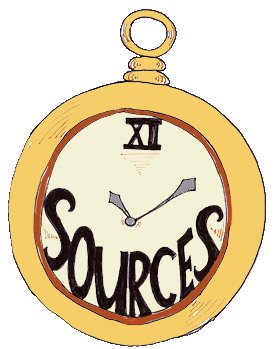

"If I had a world of my own, everything would be nonsense. Nothing would be what it is because everything would be what it isn't. And contray wise, what is, it wouldn't be. And what it wouldn't be, it would. You see?"
As Alice leaves behind the Caterpillar and the uncertainty of the space "between" frames, she finds herself in the more continuous, flowing world of animation—itself disrupted by the inconstant figure of the Cheshire Cat. If Tenniel is to thank for our image of Alice, then Disney is to thank for our image of the Cheshire Cat, whose movement is supplied by animation rather than the turning of a page.
Beverly Clark describes Disney as
Someone who wreaks havoc with the "original" words of a story, disrupts what some have seen as an original purity (yet thereby reminds us that a pure point of origin is illusory). Someone who disliked adapting Wonderland, he subsequently reflected, since he felt more constrained by Carroll's fixed words than by the more malleable versions of fairy tales. (168–169)
Likewise, Perry Nodelman and Mavis Reimer argue that the Disney version of Alice "overdoes the slapstick and cuteness in a way that dissipates the unsettlingly threatening tone of the original" (54). In Disney's version, Alice is against text, as Ron Shenk describes:
Alice is bored with the textual reading of classical history being given by her uptight Victorian sister. Instead she wants images, pictures in a book. She sees images as world."In my world, books will have nothing but pictures," she declares. This thought takes her further into her imagination and the deconstructive realm it creates. "Everything will be what it isn't and not be what it is." (249)
The friendly colors and image-driven puns of Disney's Alice offer a Wonderland as personal dreamscape, suggesting that the only rules this version suberts are the rules of a grown-up world Alice still doesn't fully understand. The nonsense is friendly-the Cheshire Cat unhelpful, but the "madness" unthreatening.
While I read Alice as a child, there's some debate on whether Alice is a children's text. Peter Hunt suggested that Alice is "much more appreciated by adults" (5). The Disney version, on the other hand, requires no filling in of rules and nonsense—like most of the animated Disney adaptations, it softens narrative alongside its images.
Alice is mostly passive in this Wonderland—a stand-in for the child viewer, inviting us to laugh at the escapades of Wonderland's residents, but not to participate in them. The Alice of Disney's film is creator/dreamer and audience—not unlike Alice Liddell, simultaneously inside and outside of the story.
Disney is also responsible for the 2010 adaptation Alice in Wonderland, directed by Tim Burton and notable for bringing a twisted, darkened lens to the tale—and an adult Alice, still at odds with society's expectations. While not entirely animated, the work is so dependent upon computer graphics that it similarly builds a full vision of an unreal land.
Brian McHale notes that this Alice is a less-recognizable version, moving into the territory of "re-write":
Isn't Burton's Alice too old, one is bound to wonder—a young woman of marriageable age (nineteen) instead of a little girl of seven or eight? And how did the Alice that we thought we knew become a dragonslayer, donning armor and wielding the vorpal blade in a climactic confrontation with the Jabberwocky, striking the same pose as the young (male) hero in John Tenniel's famous illustration from Looking-Glass?
Why re-write Alice into such darkness? And, notably, why do it in a medium so reliant on computing where the previous Disney film was solidly in hand-drawn animation? Do we simply place this alongside the retellings of Batman and other postmodern reboots, or is there something more to Alice's new trips down the rabbit hole?
"Cheshire Puss, would you tell me, please, which way I ought to go from here?"
"That depends a good deal on where you want to get to."
"I don't much care where—"
"Then it doesn't matter which way you go."
"—so long as I get somewhere."
"Oh, you're sure to do that, if you only walk long enough."
"What sort of people live about here?"
"In that direction lives a Hatter, and in that direction, lives a March Hare. Visit either your like: they're both mad."
"But I don't want to go among mad people."
"Oh, you can't help that, we're all mad here. I'm mad. You're mad."
"How do you know I'm mad?"
"You must be—or you wouldn't have come here."
Alice follows many paths through Wonderland, and likewise through mediums: the journey and metaphor of her world makes it recognizable even when it is unexpectedly inverted. As Alice's journey continues, she becomes more aware of the rules of Wonderland: just as we must become aware of the rules that shape Alice's identity. In animation, Alice is fully-fleshed, integrated into her dreamworld in a way that the pseudo-realism of photography and film does not permit. But she's far removed from text, instead captured by the spoken word.